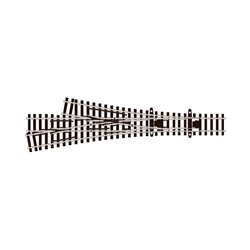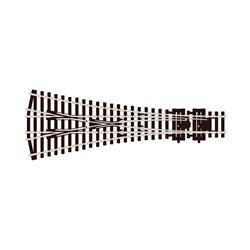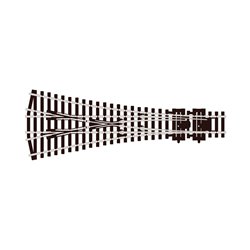In theory, OO gauge can be used outdoors, modern nickel silver track, although will require a lot of cleaning, will...
No products
Product successfully added to your shopping cart
There are 0 items in your cart. There is 1 item in your cart.
Search Tips
Christmas and New Year
We are dispatching orders every weekday apart from Christmas Day, Boxing Day and New Year's Day.
If you order is time critical, select next day delivery at checkout.
The shop in Sandown is closed from 25th December, reopening on 30th December.
Are there any special considerations for wiring and controlling a 3-way turnout as opposed to a standard turnout?
Yes, there are some special considerations when wiring and controlling a 3-way turnout compared to a standard turnout in model railways.
Firstly, due to the complexity of the 3-way turnout, it typically requires more power to operate than a standard turnout. As a result, it's recommended to use a larger gauge wire to ensure sufficient power flow and to avoid voltage drops or flickering lights.
Secondly, when wiring the 3-way turnout, it's essential to ensure that the polarity of the rails is correct. The diverging rails must be connected to the correct polarity, or else the train may derail or short circuit. It is also recommended to use separate power feeds for the diverging rails to ensure consistent power flow.
Finally, when controlling the 3-way turnout, it's important to use a switching motor that can handle the extra complexity of the turnout. Some switching motors may struggle to align all three routes correctly, resulting in unreliable operation. It is also essential to ensure that the switching motor is correctly aligned with the turnout and that the throw of the switching motor matches the position of the turnout.
In summary, when wiring and controlling a 3-way turnout, it is important to consider the increased power requirements, correct polarity, separate power feeds and suitable switching motors to ensure reliable and smooth operation.
Click here to receive the tips weekly in your mailbox. You can unsubscribe at any time.










